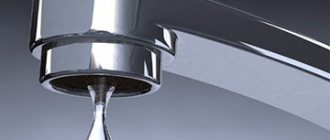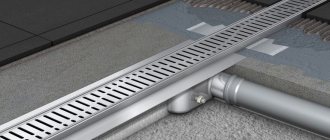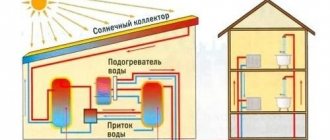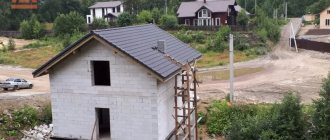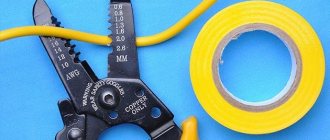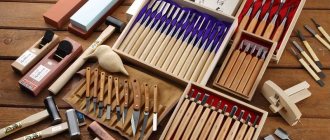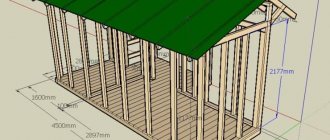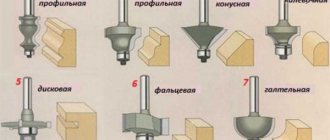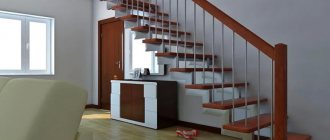Maintaining a comfortable indoor microclimate in summer is possible in various ways. Previously, split systems and other types of air conditioners were used. Now an alternative solution has emerged - water air purifiers or air conditioners. These devices use water to lower the ambient temperature. Outwardly, they are similar to mobile air conditioners, but the operating principle is fundamentally different.
Purpose and device
As a rule, all industrial coolers use water as a coolant. This is their main difference from other series of cooling devices, which is why they are called industrial water air coolers.
The heat exchanger of an industrial water cooler consists of a whole set of finned tubes enclosed in end plates, which are closed with sealed covers. The device body is equipped with coolant inlet and outlet pipes (water, aqueous glycol solution), and flanges for attaching the device to the pipeline. Each heat exchanger model is equipped with plugs for quick bleeding of air and water drainage, as well as installation accessories.
The body of the device can be made of carbon or stainless steel. The material used for the heat exchanger pipes depends on the quality of the cooling water and the operating conditions of the installation. The most common materials used for pipes are stainless steel and brass. Some models use nickel silver pipes. The finning of pipes depends on the method of its manufacture, but most often, aluminum alloy is used to make heat-receiving fins.
Industrial water air coolers differ in performance, diameter and fins of pipes, number of cycles of coolant passage and design, among which are:
- Flanged. The marking contains the letter “F”.
- Vertical. The marking contains the letter “B”.
- Horizontal. The marking contains the letter “G”.
- Hanging. The marking contains the letter “P”.
Blinds
If you don’t want to use foil and tinted material for windows, then you should opt for blinds. Using them you can not only cool the room, but also create coziness and comfort in it. True, like curtains, they require special regular care.
For maximum absorption of sunlight, it is better to choose wooden blinds; if they are closed all day, they can block up to 90% of the light flux. This means that there will be no sweltering heat in the house. True, a darkened room sometimes evokes melancholy, because, of course, it is more pleasant to enjoy bright sunlight. But in this situation you will have to choose between personal preferences and convenience.
What is a refrigerator cooler?
An air cooler for a refrigeration chamber is a device whose operating diagram looks like this: a fan supplies air pressure to a heat exchanger with boiling refrigerant or intermediate coolant. Having transferred heat to the coolant, the cooled air flow enters the refrigerating chamber. The cooler heat exchanger is usually made of finned tubes, which significantly increases the heat exchange area compared to smooth-tube heat exchangers, and, accordingly, the efficiency of the device.
Heat exchangers are distinguished by fin type:
- Cast. This type of pipe finning is the most reliable, providing the best heat transfer efficiency.
- Lamellar. It occurs when steel inch pipes or copper pipeline with a diameter of 18 mm are used in the heat exchanger.
- Spiral wound. It is made from steel, aluminum or copper tape using the winding method. The fin pitch can be 30, 20 or 15 mm.
- Spiral rolling. It is made by rolling (extruding) ribs from a copper or aluminum pipe. The rib pitch after knurling is 3 mm.
According to design features, air coolers for refrigeration chambers are divided into:
- Dry. In such installations, heat exchange occurs through contact of air with the heat exchanger tubes through which the refrigerant moves.
- Wet. Air cooling is carried out with open water, through its spraying using nozzles or contact of the air flow with a cooled ceramic ring irrigated with an aqueous glycol solution.
- Mixed. In such coolers, the air passes through an aqueous glycol solution that has passed through a heat exchanger.
The design of the cooler for industrial refrigerators with a contact heat exchanger (except for gravity ones) includes axial or centrifugal fans. These devices create a directed air flow, which cools the room.
The most popular equipment for cooling and freezing products are devices with a dry heat exchange principle. Freon is used as a refrigerant in such devices. A complete set of such equipment includes: a refrigeration unit, an air cooler, an external or internal control panel, connecting cables and automation.
⇡#Modern bells and whistles
Today's fans, both tabletop and floor-standing, have more than just buttons on the body. Modern models are often equipped with remote controls that allow you to change the flow power from any corner of the room. Also, a modern fan can operate in automatic mode if it has a timer: you can set the required time interval, after which the device will turn itself off.
Fan with fumigator Globus
Other bells and whistles include built-in fumigators to protect against insects, or ionizers for air purification; The latter, by the way, are already equipped with everything possible: we recently wrote about humidifiers and air purifiers, which are also massively equipped with built-in “Chizhevsky chandeliers.”
Scarlett floor fan with sophisticated control panel
Some completely optional bells and whistles include an LCD display and a built-in electronic thermometer, the readings of which cannot be said to be very accurate, especially when the fan is running. Another not very necessary bells and whistles can be called “wind mode”: that is, when the fan blows the room not with a light stream of wind, but with “gusts”, simulating normal wind.
How the cooler works
An evaporative air cooler is a device consisting of a fan, water pump and filter system enclosed in a plastic or metal housing. The fan sucks air through holes in the housing and passes it through a filter that is constantly wetted with water. The heat of the air promotes the evaporation of water and subsequent cooling of the air.
The filters included in the cooler clean the air from harmful impurities and particles larger than 10 microns, as well as unpleasant odors. In some cases, it is possible to aromatize the air with a selected scent, for example, eucalyptus.
It is important to note that the air must pass through the cooler only once, otherwise the cooling effect of the device will be reduced.
The main rule of evaporative cooling is: as much air as was supplied to the room through the air cooler, the same amount should be removed from the room through open openings (windows or doors), and if there are not enough of them, then using exhaust ventilation. Violation of this rule can lead to a significant increase in air humidity, making staying in the room uncomfortable for both people, animals and plants.
The cooler can operate in both air cooling and fan modes. Switching to ventilation is necessary in cases where environmental conditions do not allow cooling the air, for example, at sub-zero temperatures, when the water in the device may freeze.
Water supply
Stationary coolers are connected to the water supply network using metal or rubber tubes, and can additionally be equipped with a device for water purification, which allows you to extend the life of the cooler filters. In household coolers, water is poured into a special reservoir manually.
Water flow depends on the relative humidity and temperature of the outside air, as well as the fan speed. On a hot day, a stationary cooler connected to a water supply network with a constant supply of water consumes 13-48 liters of water per hour, household coolers - from 1 liter/hour. The lower the air temperature, the less water is required to cool it.
Energy consumption
As for energy consumption, it depends on the power of the cooler motor and for household coolers it is approximately 125-220 W/h, and industrial-commercial coolers consume from 0.25 to 20 kW/h. This is approximately 15-20% of that energy , which air conditioners need to cool the same volume of air. For comparison, a household refrigerator consumes approximately 60 Wh, and a desktop computer with an LCD monitor uses approximately 300 Wh.
Darkening windows
This method makes it possible to cool a room without air conditioning and will be suitable for residents of southern regions. All glass must be covered with a tinted film, preferably blue or green. These colors were chosen because blue (blue) color, with its effect on the endocrine system, relaxes a person. In addition, it resists the effects of allergies and infections.
And green is the most common in nature, and it is perceived on a subconscious level as peace and tranquility. Through such artificial darkness it will be possible to observe everything that happens outside the house (albeit in unusual colors), but the bright rays of the sun will no longer influence to the same extent.
The disadvantage of this method is that natural colors are lost.
Air cooler efficiency
Why is an air cooler so effective? The answer is simple: the effectiveness of an air cooler lies in its action, that is, on the heat transfer between the cooling and cooled media, which are separated by a solid wall. Don’t forget about safety precautions when connecting air coolers to electrical machines. In particular, when connecting, it is necessary to take measures to prevent water from entering open parts of electrical machines. In this case, it is necessary that when connecting water to the air coolers, the counterflow rule is observed, that is, the water must enter from the air outlet side of the air coolers. When choosing an air cooler, you should be guided by the main technical characteristics, which include: cooling water flow, air flow, cooling water temperature, cooled air temperature, heat flow, air cooler mass. The air cooler is designed only for a certain range of losses, which can be regulated by the amount of water flowing through the air cooler tubes. In order not to be mistaken by the technical parameters, in practice, the calculation of an air cooler is usually carried out with a margin of ten percent or more to their cooling capacity, with a possible decrease in the efficiency of their operation during periods of cleaning work. If we are guided by existing standards, then according to OST 16.0.684.001-79, it is recommended to take the reserve in the amount of 25 percent.
An important factor when choosing an air cooler is the choice of manufacturer. Since the design of the air cooler is entirely metal, it is worth considering suppliers located in regions where metalworking is their core activity. Due to the fact that the raw material base is nearby, the cost of manufacturing an air cooler is significantly reduced.
⇡#Table fans
The most popular means of cooling for those born in the USSR, before and after, is a fan. A propeller on a stand is an invariable attribute of most Soviet apartments, offices, buses, cars, and more.
Traditional Vitek fan on stand: protective cover and three speeds
Table fans, KO suggests, are designed to be installed on a table or on a windowsill. The blades of such fans are small, as is the power - when compared with other types of similar devices. Such fans are designed to create a comfortable zone for at least one person, and their main advantages are their compactness and the ability to quickly move them to another location. There are even ultra-compact USB-powered models.
The Orient table fan is no longer on a stand, but on a frame
Most table fans allow you to adjust the force of the air moved using buttons or a rotating knob. And almost all of them are equipped with a protective mesh that completely covers the propeller on all sides. Although, of course, you can find simple models without a protective mesh at all.
Timberk table fan without grille, still stylish
Of the technical characteristics of desktop models, the most important are power and noise level. It is recommended to take a fan with a noise level no higher than 30 dB, although for some models the “permissible” noise level can reach 38 dB, that is, during operation the unit will happily “ride” your ears. It’s better to listen to the selected model before purchasing: often manufacturers indicate in the data sheets only the lower noise limit, which is valid for the slowest fan operating mode.
Many brands sell table fans in Russia, both good and Russian-Chinese: SUPRA, Rolsen, Timberk, Mystery, Vitek, Polaris, Bimatek, Stadler Form, Bork and others.
Classification of air coolers according to operating principle
There are two main types of air coolers - evaporative type and water type.
In evaporative air coolers, a phase transition of a substance from a liquid to a gaseous state occurs inside the tubes (boiling of the refrigerant as a result of heating from warmer air). The process of boiling the refrigerant inside the tubes is accompanied by cooling of the heat exchange unit and, accordingly, the pumped air. Such devices are often called simply evaporators.
In water air coolers, a coolant flows inside the tubes without phase transformations (water or various glycol solutions), which cools the heat exchanger and, accordingly, the air pumped through it.
Operating principle of water air cooler
The principle of the air cooler is as follows: cooled water enters the heat exchanger, where, through the fins of the pipes, it removes the excess temperature of the air flow passing through it. To effectively cool the air in electric machines operating in temperate climates, the temperature of the water circulating in the heat exchanger should be no higher than 30C°. For devices installed in hotter climates, the coolant temperature should vary between 30-40C°.
Some models are equipped with fans that suck out heated air or mix in cold air inside the electric machine. The efficiency of a water air cooler with a fan is significantly higher than that of one not equipped with this device. But it is not always possible to use them due to the design features of the cooled mechanism.
Reviews of the model BPAM-09Н from Ballu
The model is included in the middle segment of coolers, but is highly valued by users. It is noted that the device shows good performance even when used from the sunny side under a window. According to the owners, only 10 minutes are required to bring the temperature to the optimal state. But for full operation of this model, the pipe will need to be brought outside - hot air will be discharged through it. As for negative reviews, the BPAM-09N air cooler for home is significantly limited in settings. You can only regulate the speed of rotation of the fan blades, and other parameters are set according to a single standard. This model is also criticized for its noisy operation, insufficiently effective air filtration system (from dirt and odors), and the lack of a timer option and remote control. That is, in terms of basic performance qualities, the solution is worthy, but the functionality and individual operational nuances spoil the overall picture.
Main types of devices for refrigeration chambers
When considering industrial air cooling systems, it is worth highlighting water models and devices that require freon supply. These products vary in design and functionality. Among the popular types of air coolers for industry, freon types predominate, which allow cooling the room with maximum efficiency.
The main differences of this technique:
- application in refrigeration and freezer chambers with negative temperatures in the working volume;
- connection to a compressor unit with refrigerant supply;
- the presence of an evaporation unit that converts liquid refrigerant into a gaseous state;
- control of fan rotation speed to ensure the desired indoor temperature;
- optimal protection against the aggressive influence of freons on metal.
The water air cooler for the refrigeration chamber does not convert the working fluid, but only uses it to cool the heat exchanger. Fans blow air from the cooled system into the chamber. Such means are connected to chillers - units for cooling the heated coolant. The efficiency of chillers directly depends on the outside air temperature. Therefore, in summer conditions, this technique often loses its effectiveness.
Timely ventilation of the house
It is best to ventilate a house or apartment at night and in the evening, when the temperature is lower and it becomes cooler outside. To quickly and effectively create the desired temperature without air conditioning, you need to open the windows in different rooms and keep the interior doors open.
As a result, natural circulation and saturation of fresh air is formed in all rooms. And modern sunscreens today can make a significant contribution to keeping your apartment invigoratingly cool. Using these methods in a comprehensive manner, you can actually cool the apartment and ensure that the temperature in the rooms does not exceed 21-23 degrees, which is optimal for the summer season.
How are complexes for industrial use different?
There are different systems to meet the needs of each enterprise. In one case, a block with two fans is sufficient; in another situation, several complexes with 3-4 fans in each are installed.
There are different classifications of air coolers. Equipment differs in heat exchanger area, number of fans, air mass flow, and size. The power of the system will affect the efficiency of using the model.
Installation features are also taken into account during selection. The complexes can be mounted on the wall, ceiling or floor of the refrigeration chamber. The choice depends on the layout of the chamber space and other features. The main characteristics of the fan units are calculated and indicated when designing the chamber.
The right film
A great way to protect yourself from sunlight is a tint film. But when choosing it, two factors should be taken into account:
- Light transmittance;
- IR reflection level.
The level of light transmission determines how much light will be reflected outward. This is important, because the tinting will remain on the windows during the cold season. Then it will reflect sunlight, which is not very good.
IR radiation is the main carrier of heat. The better the film reflects infrared light , the cooler the room will be during the day. But keep in mind that the tinting will remain on the windows for the winter. It will prevent the room from warming up.
Tinting films with different light transmittance.
Air cooler design
A fin-tube air cooler consists of tubes, the tubes are connected by special U-shaped rolls, and lamellas are pressed onto the tubes. At the inlet to the heat exchange unit there is a refrigerant distributor, the purpose of which is to evenly distribute the flow throughout all circuits of the heat exchanger. At the outlet of the heat exchange unit, an output manifold is installed to combine the flows of the gas phase of the refrigerant.
Composition of the evaporator heat exchange block:
Technical characteristics of air coolers, features of selection and application
The performance in the selected operating mode depends on the volumetric flow rate of air pumped through the heat exchanger, the difference in air temperatures at the inlet and outlet of the heat exchanger and the specific heat capacity of the pumped air under given conditions.
Q = G * Cp * (Tin – Tout)
Q – capacity, W G – volumetric air flow, m3/h Cp – specific heat capacity of air, kJ/(kg °C) Tin – air temperature at the inlet to the air cooler, °C Tout – air temperature at the outlet of the air cooler, °C
Heat transfer surface area is the surface area through which heat transfer occurs from the heat exchange unit to the air. To increase the heat transfer area, fins (lamellas) are pressed onto the heat exchanger tubes. The slats, in turn, have a specially shaped profile to increase the area. The larger the heat exchange surface area, the lower the amount of moisture condensed from the air during the cooling process. Accordingly, the smaller the heat transfer area, the higher the moisture condensation on the lamellas. This can be critical when refrigerating unpackaged food because... Condensation of water vapor from the air will cause the refrigerated products to dry out and lose their weight and appearance.
Volumetric flow rate of air pumped through the heat exchange unit. From the formula for calculating performance, it can be seen that the more powerful the fans used and the higher the volumetric air flow, the higher the performance of the air cooler.
⇡#Bladeless fans
There are fans without blades at all. Bladeless fans from Dyson, for example, look futuristic, are completely safe, but cost a lot. At first it’s difficult to understand where the air comes from: it seems like it’s coming from nowhere. Here is a room, here is a table, here is a plastic ring - and out of nowhere on the other side of the ring there is a stream of air.
Dyson bladeless fans on a telescopic stand
It's actually quite simple. The Dyson Air Muliplier draws in air and distributes it around the perimeter of the ring, creating a low-pressure zone and drawing air into the ring. Air comes out under strong pressure from a gap around the perimeter of the ring, so thin that at first glance it is not visible.
This fan, which costs around $300, operates almost silently. By the way, this technology allows you to create not only round fans, but also in the form of other closed shapes - for example, a curved oval.
One form of bladeless fans
Why Dyson? Because James Dyson was the first to bring such a design to market. Various clones often look more modest; they are produced by SUPRA, Clever&Clean, Flextron, Orion, VES, Roward, Kitfort and others.
Industrial heat exchange equipment
Industrial air coolers are most often of the surface or dry type. This type of device is used for cooling electrical equipment, such as electric motors, hydraulic and turbo generators, etc.
Industrial devices are produced in the following series: VO; VUP; GP; VB.
- VO - heat exchangers of this series are used in enterprises where large electrical equipment operates. The principle of operation of the device: cold water circulates through the finned tubes of the heat exchanger. The air mixture coming from the mechanism comes into contact with the surface of the finned tubes, cools and returns to the mechanism. Heat exchangers of this series can be produced in two climatic versions: general and moderately cold.
- VUP are installations designed for heat flow up to 500 kW. The design of this equipment is made of carbon or stainless steel and is designed for maximum cooling of the hot air flow. Water is used as a refrigerant in this series of devices.
- GP. The equipment of this series has some design features, thanks to which the chilled water goes through several cycles, which makes it possible to more effectively cool the air mixture from large electrical mechanisms.
- VB is a built-in cooler that is designed for a heat flow of up to 200 kW.
Ventilate properly
When it’s hot, you want to get as much fresh air as possible, but this is impossible if the thermometer shows more than 30. Accordingly, there is no point in opening the windows during the day, otherwise the effect will be completely opposite.
Ventilation of the house should be done at minimum temperatures, preferably at night. At the same time, you can safely leave the curtains open without fear of the penetration of the scorching rays of the sun. Optimal periods for ventilation:
- from 4:00 to 8:00;
- after 22:00.
Household air cooling devices
Household or mobile air coolers are direct competitors to split systems. Such climate technology has recently become especially popular among our compatriots, and there are a number of reasons for this:
- Low cost. The average price of a household air cooler varies between 2500-3000 rubles.
- Easy to maintain and install. The design features of this device eliminate the release of condensate, and accordingly, household coolers do not require a drainage pipeline.
- Low power consumption. The design of this device includes all electrical equipment - a water pump and a fan. On average, the energy consumption of household coolers is 7-9 times lower than that of an air conditioner.
- Ecological cleanliness. This equipment does not use freon or other chemicals. Ordinary water is used as a coolant in mobile air coolers.
The operating principle of mobile coolers is based on the natural evaporation of water in a flow of warm air created by a fan.
The pump, from a container in the device body, supplies water to the absorbent filter. The fan, creating an air stream, causes the water to evaporate, and this phenomenon occurs with a decrease in temperature. The air is cooled, humidified, cleaned through a filter element, and then enters the room. Advice: if the room has high humidity, or there is a source of draft, then using a cooler of the type described above is not recommended. It is better to use an air conditioner or a freon heat exchange unit. Industrial air coolers are most often of the surface or dry type. This type of device is used for cooling electrical equipment, such as electric motors, hydraulic and turbo generators, etc.
Service
Evaporative air coolers do not require special maintenance. It is enough to occasionally wipe the outer casing of the device with a damp cloth. The evaporator requires maintenance. It is cleaned at least once a month with warm water and a mild detergent to avoid the formation of limescale, dirt, mold and mildew. Depending on the model chosen, the evaporator may be a consumable item and can be replaced if the original cooling capacity is lost.
It is important to perform seasonal shutdown correctly. When the need for cooling passes, drain the water from the tank, disconnect the device from the power supply and cover it to protect it from dust. Turn on the fan function (if equipped) for 30 to 60 minutes to completely dry the unit before seasonal storage.
